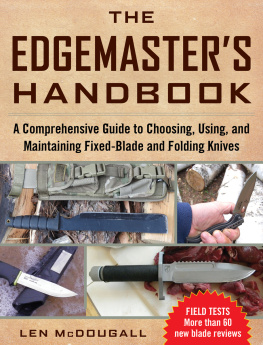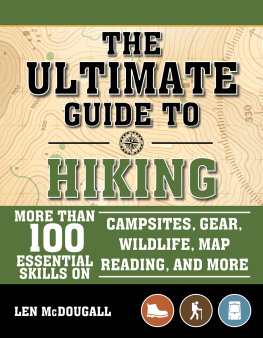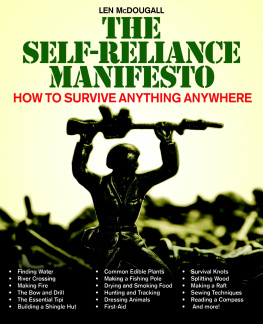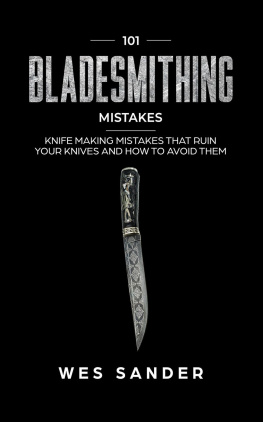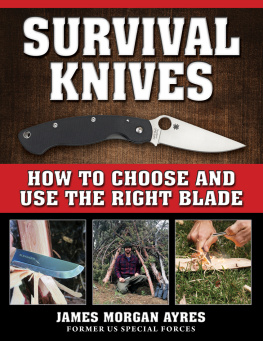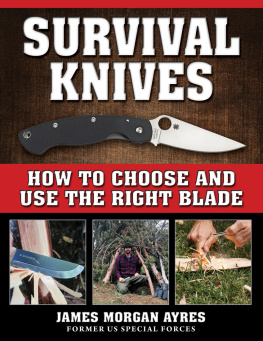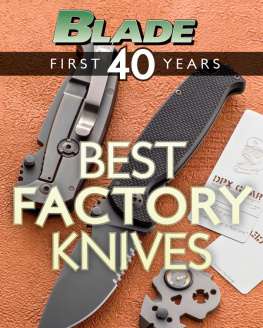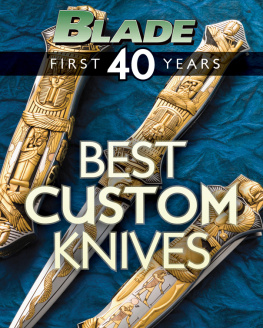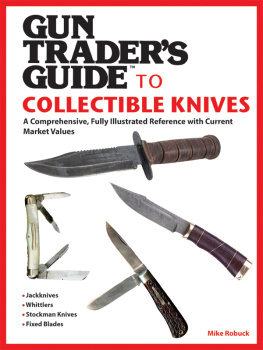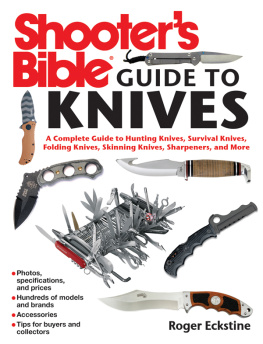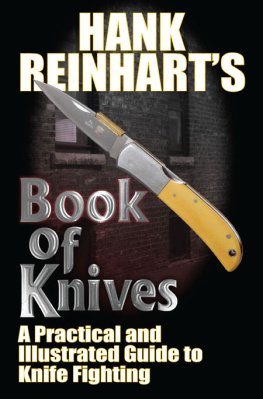


Copyright 2018 by Len McDougall
All rights reserved. No part of this book may be reproduced in any manner without the express written consent of the publisher, except in the case of brief excerpts in critical reviews or articles. All inquiries should be addressed to Skyhorse Publishing, 307 West 36th Street, 11th Floor, New York, NY 10018.
Skyhorse Publishing books may be purchased in bulk at special discounts for sales promotion, corporate gifts, fund-raising, or educational purposes. Special editions can also be created to specifications. For details, contact the Special Sales Department, Skyhorse Publishing, 307 West 36th Street, 11th Floor, New York, NY 10018 or .
Skyhorse and Skyhorse Publishing are registered trademarks of Skyhorse Publishing, Inc., a Delaware corporation.
Visit our website at www.skyhorsepublishing.com.
10 9 8 7 6 5 4 3 2 1
Library of Congress Cataloging-in-Publication Data is available on file.
Cover design by Tom Lau
Cover photo credits: Len McDougall
Print ISBN: 978-1-5107-2769-4
Ebook ISBN: 978-1-5107-2771-7
Printed in China.
TABLE OF CONTENTS
PREFACE
I am grateful for the opportunity to be invited to write a few lines for a good friend, Len McDougall, respected writer of numerous books on the outdoors, a field guide and expert tracker, and a man who lives life on the hard side. He has handled many of lifes ups and downs, and with his perseverance and the assistance of an incredible wife, continually beats the odds. His writings carry not only a message, but a great transfer of knowledge that makes one feel that he is right there in the thick of it with Len. His book The Edgemasters Handbook will be a great source of inspiration and knowledge.
Mike Fuller, founder and president of TOPS Knives
INTRODUCTION
Another knife book? Before you groan, and put this book back on the stores shelf, be assured that this treatise on mankinds original tool (several species use inanimate objects as hammers, but only we manufacture cutting tools) is intended to be unique on a number of points. If I thought that it would be just another book about knives, too many of which have regarded them as jewelry, knick-knacks, and status symbols, I wouldnt waste my waning lifetime composing it.
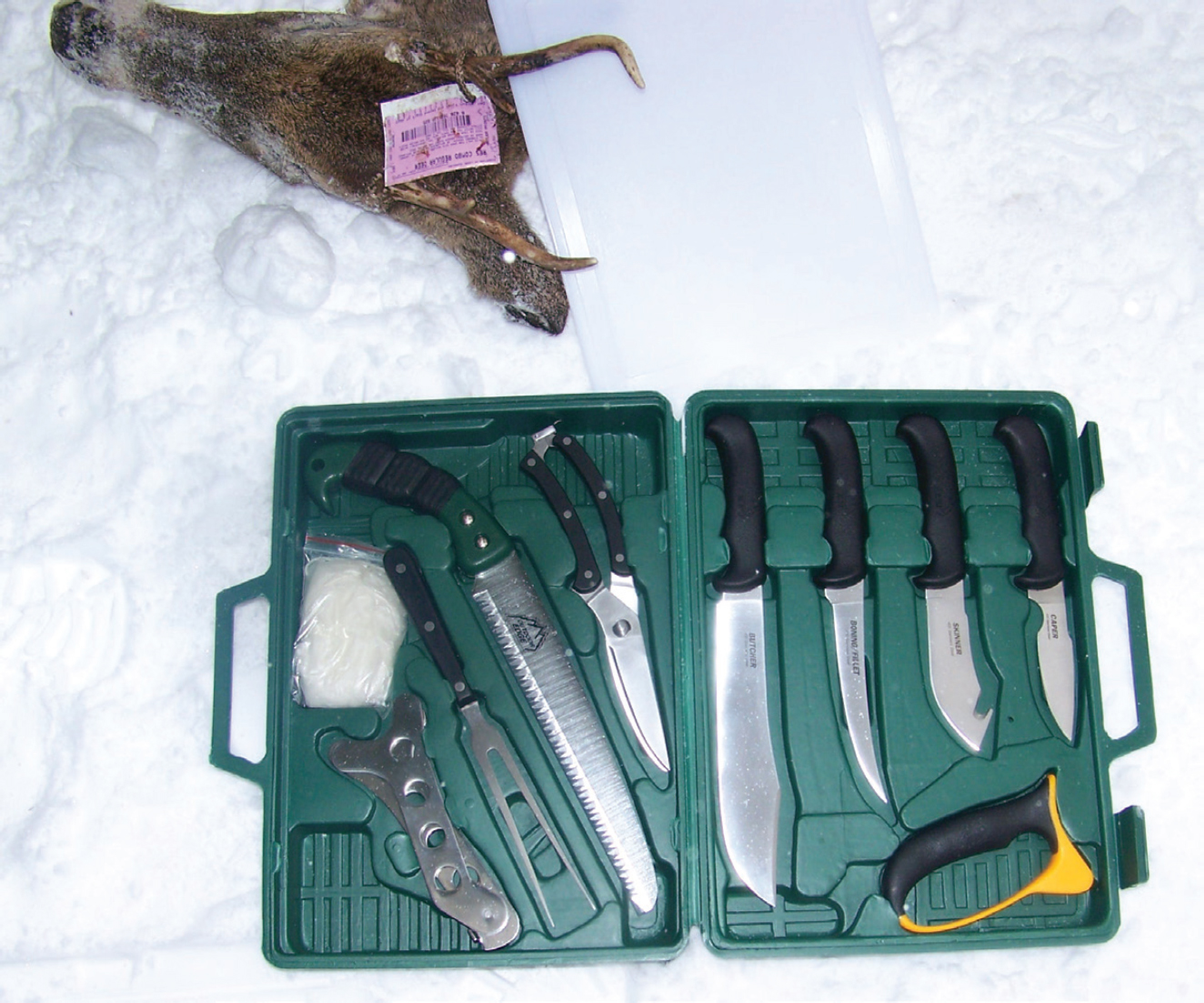
As this portable butchers kit from Outdoors Edge illustrates, cutting tools have evolved to take many forms.
Sure, it delves into some of the same facets surrounding knives as can be found in other knife books, because to leave out crucial information concerning alloys, edge designs, and the like would leave the book incomplete. As an author, I must presume that at least some readers have opened this book to answer questions, and that a few may be less than expert.
Where this book is intended to differ from other treatments is that it doesnt consider knives to be just manicured shards of steel, but as valued friends. Not as accoutrements of ostensible badassery, or icons of some usually imagined warrior status, but as the necessary, genuinely loved tools of life that good knives represented to our forefathers. There have been a lot of years in my own life when my knife (I often only had one to my name, because one was all I could afford) represented one of my most precious and relied-upon possessions.
Mostly, my knife has performed mundane chores, like opening a bag of livestock feed or trimming branches. But on occasion it was called upon for uses of a more severe nature, like dispatching wounded animals, and in a couple of instances, for more serious usesyoull understand if Im reluctant to divulge some of the particulars of those incidents. Suffice it to say that the techniques and tactics described herein are not cocktail party hypothesesI place extreme value on my credibility.
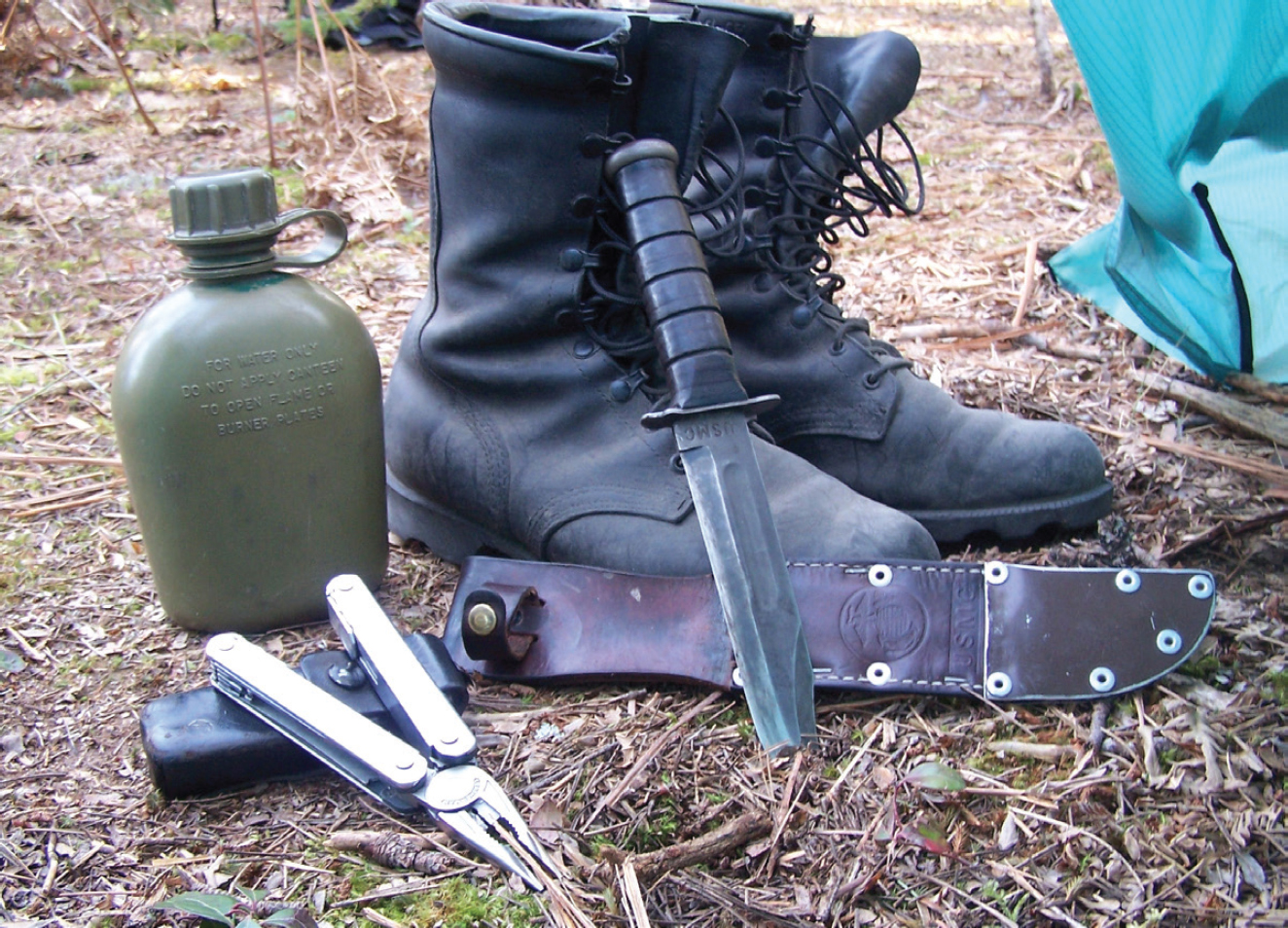
Only a few generations ago, and for hundreds of generations before, a woodsmans knife was precious and unique, as prized as anything he or she owned.
I have taken the liberty of using factual anecdotes to illustrate points I want to make whenever possible. I hope that these snippets of stories will prove entertaining to read, as well as helping to clarify pertinent details concerning edged tools and their uses. It has been my often unfortunate observation that learning to do a thing correctly is most effectively done by paying a penalty for doing it wrong. Thats how I learned too many of the skills Ive acquired while using cutting tools, and I dont recommend it. Learning to handle edged implements through attrition leaves scars, so if you can learn the things Ive learned by vicarious means, without the blood loss, youll be better for it than I am.

One of the goals that this book most fervently strives to attain is to reduce the number of people who learn the lessons in its pages the way its author hasthe hard way.
Finally, a quote about this book which makes me especially proud comes from Brian Tighe , a Top Ten knife designer of more than three decades, who Columbia River Knife and Tool (CRKT) describes as a Canadian Renaissance Man. In his words: Inspiration and insight; there is more to a book than just reading.
Why we like knives:
There will always be a place for knives in society. Whether it be cutting open boxes, whittling a stick, or carrying a knife in your purse or pocket for a task that requires a sharp edge, knives are necessary tools.
Lindsey Phelps, Licensed Brands Manager, Columbia River Knife and Tool

CRKT calls Brian Tighe, a Canadian knife designer with thirty-one-years experience, their Renaissance Man, because his designs are definitely outside of the box.
There may be no other icon of human history that has inspired such feelings of magic, romance, and groin-deep self-confidence in its possessor as a good knife. Romanticized accounts of William Wallaces gigantic Scottish broadsword, James Bowies meteor-forged Iron Mistress, Miyamoto Musashis extra-long katana, and the vicious sickle-sword of King Davids armies have been written about and portrayed in movies many times. Mystical attributes of power and destruction that we instinctively apply to handheld blades have spawned legends like Excalibur , Anduril of Lord of the Rings , the Sword of Damocles , and even He-Mans Sword of Power . Almost universally, regardless of race, gender, or religion, a knife, big or small, imbues its wielder with a feeling of pleasure.
Some people try to deny the fascination that knives hold for humans in general, imagining that to exhibit interest in the very implements that forcibly brought civilization to society, and which most courts of law view as violent weapons, would be to somehow brand themselves as proponents of violence. But there are genuine, instinct-deep reasons for the strong attraction that blades have always held for men and women of all ages. It is no exaggeration to state that the rise of humankind has been inextricably linked to the creation of, and to innovations in, knife manufacture.
Next page
